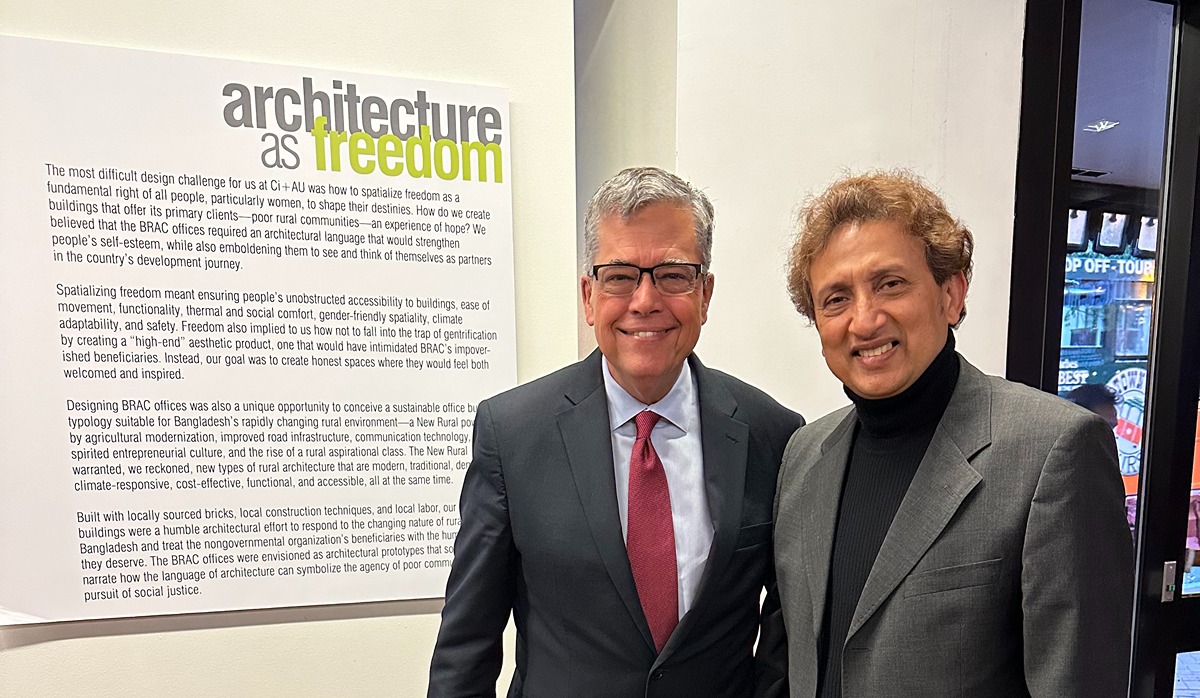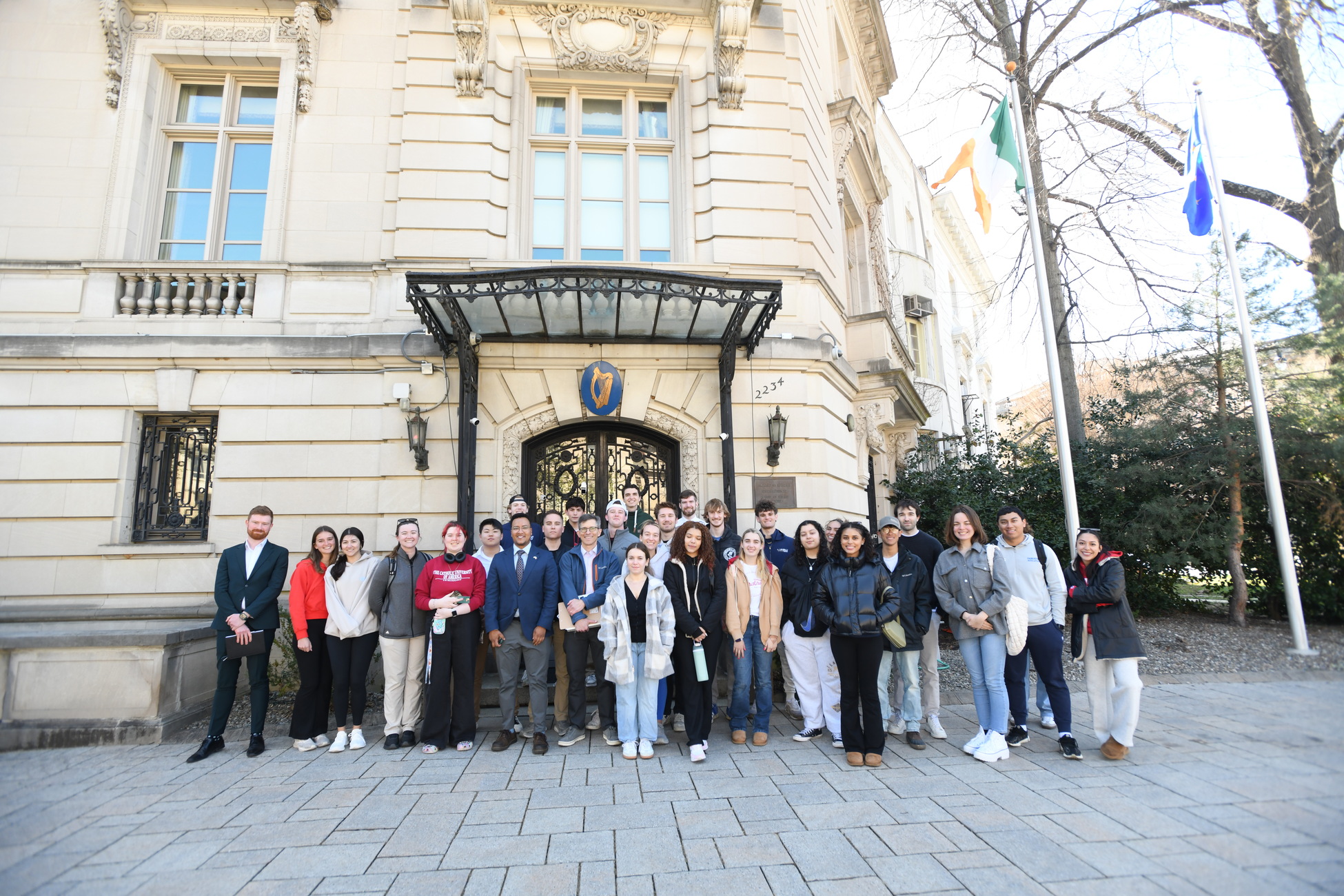Architecture Professor Adnan Morshed is transforming the lives of people living in extreme poverty in his home country of Bangladesh through buildings he and his team designed for BRAC, the world’s largest nongovernmental development organization that is best known for addressing economic inequality through initiatives such as microfinancing.
“The task of designing new BRAC offices compelled us to ask a broader philosophical question: How do we create buildings that offer its primary clients — those living in poor, rural communities — an experience of hope?” said Morshed. “We believe that architecture can spatialize a spirit of freedom. This is very important for holistic and sustainable development.”
A new exhibit curated by Morshed of this project opened Oct. 18 at District Architecture Center, the regional headquarters for the Washington chapter of American Institute of Architects (AIA|DC). “Architecture as Freedom” highlights how socially and environmentally conscious designs can promote human flourishing. The exhibit is free and open to the public until it closes Dec. 20.
At the exhibit opening reception, Morshed explained to the crowd of 150 invited guests that everything about the project — from the purpose, design, construction, and the resulting exhibition — is about supporting sustainable growth to meet the needs and aspirations of the communities served.
Asked by BRAC to design the next generation of eight regional offices that provide a diverse set of services to rural communities across the country, Morshed said he wanted to make places that reflected the mission. He created multiuse spaces where people from different faiths and backgrounds can gather for inspiration, collaboration, and transformation as they receive services to rise above poverty.
University President Peter Kilpatrick gave remarks at the gathering praising Morshed’s project as exemplifying The Catholic University of America’s institutional dedication to social justice, human flourishing, environmental stewardship, and global development. He said Morshed made these commitments visible in every aspect of the project, from material sourcing to local involvement in the construction.
Among the reception attendees were the following featured speakers: Bangladesh Ambassador to the U.S. Muhammad Imran, former U.S. Representative Jim Moran, biographer of BRAC founder Scott MacMillan, Woodrow Wilson Center South Asia Director Michael Kugelman, Dean of the School of Architecture and Planning Mark Ferguson, and Architecture Professor Julio Bermudez. All shared Morshed’s sentiments about their experience of the resilient, entrepreneurial, and hardworking spirit of the Bangladeshi people.
The “Architecture as Freedom” exhibit was organized by The Catholic University of America School of Architecture and Planning with the Centre for Inclusive Architecture and Urbanism (Ci+AU) at BRAC University in cooperation with the District Architecture Center for the SIGAL Gallery.



